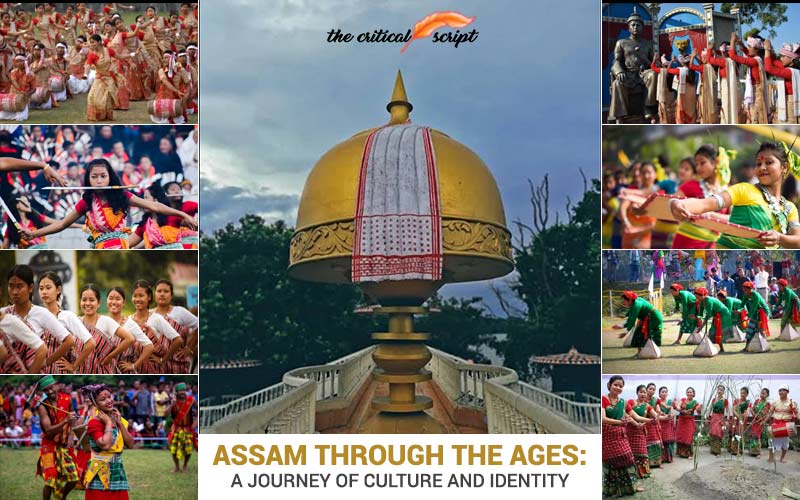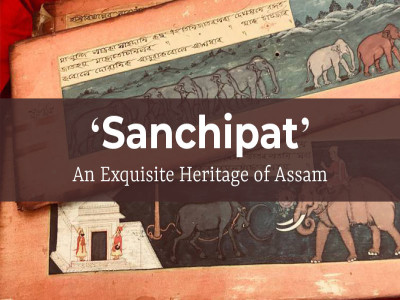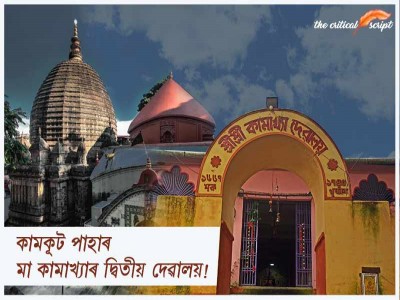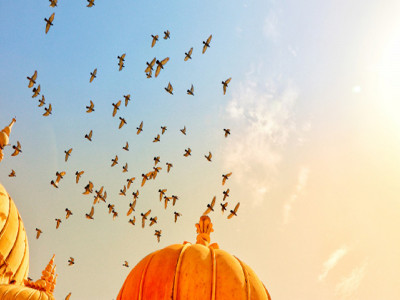
Assam Through the Ages: A Journey of Culture and Identity
The roots of culture in Assam go back almost five thousand years when the first wave of humans, the Austroasiatic people, reached the Brahmaputra valley. They mixed with later immigrant Tibeto-Burman and Indo-Aryan peoples throughout prehistoric times. The last wave of migration was that of the Tai/Shan, who later contributed to shaping Assamese culture and identity. The Ahoms further brought Indo-Aryans such as Assamese Brahmins, Ganaks, and Kayasthas to Assam.
The culture of Assam is
traditionally a hybrid one, developed through the cultural assimilation of
various ethno-cultural groups under different political and economic systems
throughout its history.
According to the epic Mahabharata
and local folklore, the people of Assam (Kiratas) probably lived in a strong
kingdom under the Himalayas in the era before Christ, which led to early
assimilation of various Tibeto-Burman and Austroasiatic ethnic groups on a
greater scale. The typical naming of rivers and the spatial distribution of
related ethno-cultural groups also support this theory.
Later, the western
migrations of Indo-Aryans such as various branches of Irano-Scythians and
Nordics, along with mixed northern Indians (from ancient cultural regions such
as Magadha), enriched the aboriginal culture. Under stronger political and
economic systems, Sanskritisation and Hinduisation intensified and became more
prominent. Such an assimilated culture, therefore, carries many elements of
diverse source cultures, whose exact roots are difficult to trace and remain
subjects of research.
However, in every element
of Assamese culture - language, traditional crafts, performing arts,
festivities, and beliefs - either indigenous elements or indigenous elements in
Sanskritised forms are always present.
It is believed that
Assamese culture developed its roots over 750 years during the era of Kamarupa
in the first millennium AD, marked by the assimilation of the Bodo-Kachari
people with the Aryans. However, this is debatable, as the concept of
"Assam" as an entity did not yet exist. The first 300 years of
Kamarupa were ruled by the Varman dynasty, followed by 250 years under the
Mlechchha dynasty, and 200 years under the Pala dynasty. Records of various
aspects of language, traditional crafts (such as silk, lace, gold, and bronze)
are available in different forms.
When the Tai-Shans entered
the region in 1228 under the leadership of Sukaphaa to establish the Ahom
kingdom, a new chapter of cultural assimilation began, lasting nearly 600
years.
Symbolism is an important
aspect of Assamese culture. Various elements are used to represent beliefs,
feelings, pride, and identity. Symbolism is an ancient cultural practice in
Assam and remains highly significant today. Tamulpan, Xorai, and Gamosa
are three of the most important symbolic elements in Assamese culture.
Tamul-paan (areca nut and betel leaves), or guapan
(with gua from the Bodo-Chutia language), are considered offerings of
devotion, respect, and friendship. This is an ancient tradition rooted in
aboriginal culture and followed since time immemorial.
Xorai, a traditional symbol of Assam, is a crafted
bell-metal object of great respect. It is used as a container while making
respectful offerings. Shaped like an offering tray with a stand at the bottom,
similar to those found in East and Southeast Asia, it can be made with or
without a cover. Traditionally made of bell metal, Xorais are now also made of
brass or silver. Hajo and Sarthebari are the most important centers of
traditional bell-metal and brass crafts, including Xorais.
Xorais are used to offer tamul-paan
(betel nut and leaves) to guests as a gesture of welcome and gratitude. They
are also used for offerings placed in front of the altar (naamghar), as
decorative symbols in functions such as Bihu dances, and as honorary gifts
during felicitations.
The Gamosa is an
article of deep significance to the people of Assam. Literally translated, it
means "something to wipe the body with" (Ga = body, mosa
= to wipe), though interpreting it merely as a body-wiping towel is misleading.
Its original term is Gamcha.
It is usually a white
rectangular piece of cloth with a red border on three sides and red woven
motifs on the fourth. Though commonly used to wipe the body after bathing (a
ritual act of purification), the Gamosa serves many other roles.
A farmer may wear it as a
waistcloth (tongali) or loincloth (suriya). A Bihu dancer wraps
it around the head. It is hung around the neck in prayer halls and was once
draped over the shoulder to signify social status. Guests are welcomed with a
Gamosa and tamul. Elders receive bihuwaan (Gamosas) during Bihu.
It is used to cover altars or scriptures and to place under objects of
reverence.
Thus, the Gamosa truly
symbolizes the life and culture of Assam. Importantly, it is used by people
across religious and ethnic lines.
Parallel to the Gamosa,
various ethnic communities in Assam have their own beautifully woven symbolic
garments with graphic designs. Other traditional symbolic elements are now
preserved in literature, art, sculpture, architecture, or used only for
religious purposes on special occasions.
Every thread of the
Assamese Gamosa carries the heritage of Assamese culture. It is not merely an
accessory but a living testament to Assam’s cultural richness, tradition, and
timeless glory.
Paintings of Assam
Assam’s artistic heritage
is interwoven with myriad expressions that capture the essence of its history,
culture, and spirituality. One of its most captivating art forms is the Assamese
scroll painting, often referred to as Pattua painting, scroll
painting, or pattachitra. These paintings narrate myths, legends,
historical events, and spiritual tales through intricate and vibrant
compositions.
Originating from the heart
of Northeast India, these scrolls reflect the profound influence of
Vaishnavism, particularly the spiritual renaissance led by reformers like SrimantaSankardev.
These artworks not only display creative mastery but also encapsulate the
cultural richness, spiritual depth, and historical narratives of Assam.
The tradition of manuscript
painting flourished with the rise of Neo-Vaishnavism, introduced by the
saint and reformer Sankardev (1449–1568 AD). These manuscripts were created
using locally sourced materials and reached their peak between the 16th and
19th centuries, preserving Assam’s cultural continuity through detailed visual
storytelling.
Tracing even further back,
Assam’s artistic journey begins in antiquity. References to artists and
paintings appear in texts like the Harivamsa and Dwarika-Lila,
derived from the Mahabharata. One such anecdote tells of Chitralekha
of Sonitpura, a renowned painter who sketched Aniruddha, the
grandson of Lord Krishna.
Another reference comes
from Banabhatta’sHarshacharita (7th century AD), which notes that King
Bhaskara of Kamarupa gifted King Harsha of Kanauj "elaborately carved
boxes containing painting panels, brushes, and gourds."
The epic stories of the Ramayana, Mahabharata, and Krishna Leela offered a vibrant canvas for artistic expression. The ability of these artists to infuse deep emotion and devotion into their work made these stories accessible to all, marking a profound cultural and spiritual awakening.
Disclaimer: The opinions expressed in this article are those of the author's. They do not purport to reflect the opinions or views of The Critical Script or its editor.

Newsletter!!!
Subscribe to our weekly Newsletter and stay tuned.

















Related Comments